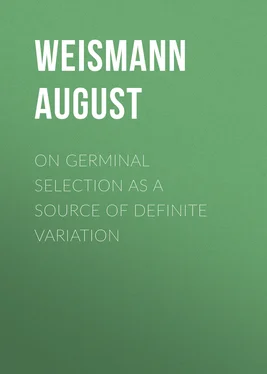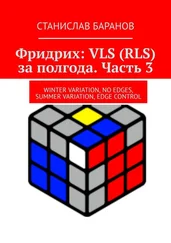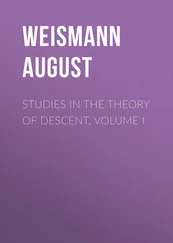August Weismann - On Germinal Selection as a Source of Definite Variation
Здесь есть возможность читать онлайн «August Weismann - On Germinal Selection as a Source of Definite Variation» — ознакомительный отрывок электронной книги совершенно бесплатно, а после прочтения отрывка купить полную версию. В некоторых случаях можно слушать аудио, скачать через торрент в формате fb2 и присутствует краткое содержание. Жанр: foreign_antique, Биология, foreign_edu, на английском языке. Описание произведения, (предисловие) а так же отзывы посетителей доступны на портале библиотеки ЛибКат.
- Название:On Germinal Selection as a Source of Definite Variation
- Автор:
- Жанр:
- Год:неизвестен
- ISBN:нет данных
- Рейтинг книги:4 / 5. Голосов: 1
-
Избранное:Добавить в избранное
- Отзывы:
-
Ваша оценка:
- 80
- 1
- 2
- 3
- 4
- 5
On Germinal Selection as a Source of Definite Variation: краткое содержание, описание и аннотация
Предлагаем к чтению аннотацию, описание, краткое содержание или предисловие (зависит от того, что написал сам автор книги «On Germinal Selection as a Source of Definite Variation»). Если вы не нашли необходимую информацию о книге — напишите в комментариях, мы постараемся отыскать её.
On Germinal Selection as a Source of Definite Variation — читать онлайн ознакомительный отрывок
Ниже представлен текст книги, разбитый по страницам. Система сохранения места последней прочитанной страницы, позволяет с удобством читать онлайн бесплатно книгу «On Germinal Selection as a Source of Definite Variation», без необходимости каждый раз заново искать на чём Вы остановились. Поставьте закладку, и сможете в любой момент перейти на страницу, на которой закончили чтение.
Интервал:
Закладка:
I am not of that opinion. I see in the growth of doubts regarding the principle of selection and in the pronounced and frequently bitter opposition which it encounters, a transient depression only of the wave of opinion, in which every scientific theory must descend after having been exalted, here perhaps with undue swiftness, to the highest pitch of recognition. It is the natural reaction from its overestimation, which is now followed by an equally exaggerated underestimation. The principle of selection was not overrated in the sense of ascribing to it too much explanatory efficacy, or of extending too far its sphere of operation, but in the sense that naturalists imagined that they perfectly understood its ways of working and had a distinct comprehension of its factors, which was not so. On the contrary, the deeper they penetrated into its workings the clearer it appeared that something was lacking, that the action of the principle, though upon the whole clear and representable, yet when carefully looked into encountered numerous difficulties, which were formidable, for the reason that we were unsuccessful in tracing out the actual details of the individual process, and, therefore, in fixing the phenomenon as it actually occurred. We can state in no single case how great a variation must be to have selective value, nor how frequently it must occur to acquire stability. We do not know when and whether a desired useful variation really occurs, nor on what its appearance depends; and we have no means of ascertaining the space of time required for the fulfilment of the selective processes of nature, and hence cannot calculate the exact number of such processes that do and can take place at the same time in the same species. Yet all this is necessary if we wish to follow out the precise details of a given case.
But perhaps the most discouraging circumstance of all is, that in scarcely a single actual instance in nature can we assert whether an observed variation is useful or not—a drawback that I distinctly pointed out some time ago. 6 6 Die Allmacht der Naturzüchtung. A Reply to Herbert Spencer. Jena, 1893, p. 27 et seq. [Also in the Contemporary Review for September, 1893.]
Nor is there much hope of betterment in this respect, for think how impossible it would be for us to observe all the individuals of a species in all their acts of life, be their habitat ever so limited—and to observe all this with a precision enabling us to say that this or that variation possessed selective value, that is, was a decisive factor in determining the existence of the species.
In many cases we can reach at least a probable inference, and say, for example, that the great fecundity of the frog is a property having selective value, basing our inference on the observation that in spite of this fertility the frogs of a given district do not increase.
But even such inferences offer only a modicum of certainty. For who can say precisely how large this number is? Or whether it is on the increase or on the decrease? And besides, the exact degree of the fecundity of these animals is far from being known. Rigorously viewed, we can only say that great fecundity must be advantageous to a much-persecuted animal.
And thus it is everywhere. Even in the most indubitable cases of adaptation, as, for instance, in that of the striking protective coloring of many butterflies, the sole ground of inference that the species upon the whole is adequately adapted to its conditions of life, is the simple fact that the species is, to all appearances, preserved undiminished, and the inference is not at all permissible that just this protective coloring has selective value for the species, that is, that if it were lacking, the species would necessarily have perished.
It is not inconceivable that in many species today these colorings are actually unnecessary for the preservation of the species, that they formerly were, but that now the enemies which preyed on the resting butterflies have grown scarce or have died out entirely, and that the protective coloring will continue to exist by the law of inertia 7 7 That is, by the law of exceedingly slow retrogression of superfluous characters, which may be designated the law of organic inertia.
only for a short while till panmixia or new adaptations shall modify it.
Discouraging, therefore, as it may be, that the control of nature in her minutest details is here gainsaid us, yet it were equivalent to sacrificing the gold to the dross, if simply from our inability to follow out the details of the individual case we should renounce altogether the principle of selection, or should proclaim it as only subsidiary, on the ground that we believe the protective coloring of the butterfly is not a protective coloring, but a combination of colors inevitably resulting from internal causes. The protective coloring remains a protective coloring whether at the time in question it is or is not necessary for the species; and it arose as protective coloring—arose not because it was a constitutional necessity of the animal's organism that here a red and there a white, black, or yellow spot should be produced, but because it was advantageous, because it was necessary for the animal. There is only one explanation possible for such patent adaptations and that is selection. What is more, no other natural way of their originating is conceivable, for we have no right to assume teleological forces in the domain of natural phenomena.
I have selected the example of the butterfly's wing, not solely because it is so widely known, but because it is so exceedingly instructive, because we are still able to learn so much from it. It has been frequently asserted that the color-patterns of the butterfly's wings have originated from internal causes, independently of selection and conformably to inward laws of evolution. Eimer has attempted to prove this assertion by establishing in a division of the genus Papilio the fact that the species there admit of arrangement in series according to affinity of design. But is a proof that the markings are modified in definite directions during the course of the species's development equivalent to a definite statement as to the causes that have produced these gradual transformations? Or, is our present inability to determine with exactness the biological significance of these markings and their modifications, a proof that the same have no significance whatever? On the contrary, I believe it can be clearly proved that the wing of the butterfly is a tablet on which nature has inscribed everything she has deemed advantageous to the preservation and welfare of her creatures, and nothing else; or, to abandon the simile, that these color-patterns have not proceeded from inward evolutional forces, but are the result of selection. At least in all places where we do understand their biological significance these patterns are constituted and distributed over the wing exactly as utility would require.
I do not pledge myself, of course, to give an explanation of every spot and every line on a wing. The inscription is often a very complicated one, dating from remote and widely separated ages; for every single existing species has inherited the patterns of its ancestral species and that again the patterns of a still older species. Even at its origin, therefore, the wing was far from being a tabula rasa , but was a closely written and fully covered sheet, on which there was no room for new writing until a portion of the old had been effaced. But other parts were preserved, or only slightly modified, and thus in many cases gradually arose designs of almost undecipherable complexity.
I should be far from maintaining that the markings arose unconformably to law. Here, as elsewhere, the dominance of law is certain. But I take it, that the laws involved here, that is, the physiological conditions of the variation, are without exception subservient to the ends of a higher power—utility; and that it is utility primarily that determines the kind of colors, spots, streaks and bands that shall originate, as also their place and mode of disposition. The laws come into consideration only to the extent of conditioning the quality of the constructive materials—the variations, out of which selection fashions the designs in question. And this also is subject to important restrictions, as will appear in the sequel.
Читать дальшеИнтервал:
Закладка:
Похожие книги на «On Germinal Selection as a Source of Definite Variation»
Представляем Вашему вниманию похожие книги на «On Germinal Selection as a Source of Definite Variation» списком для выбора. Мы отобрали схожую по названию и смыслу литературу в надежде предоставить читателям больше вариантов отыскать новые, интересные, ещё непрочитанные произведения.
Обсуждение, отзывы о книге «On Germinal Selection as a Source of Definite Variation» и просто собственные мнения читателей. Оставьте ваши комментарии, напишите, что Вы думаете о произведении, его смысле или главных героях. Укажите что конкретно понравилось, а что нет, и почему Вы так считаете.












